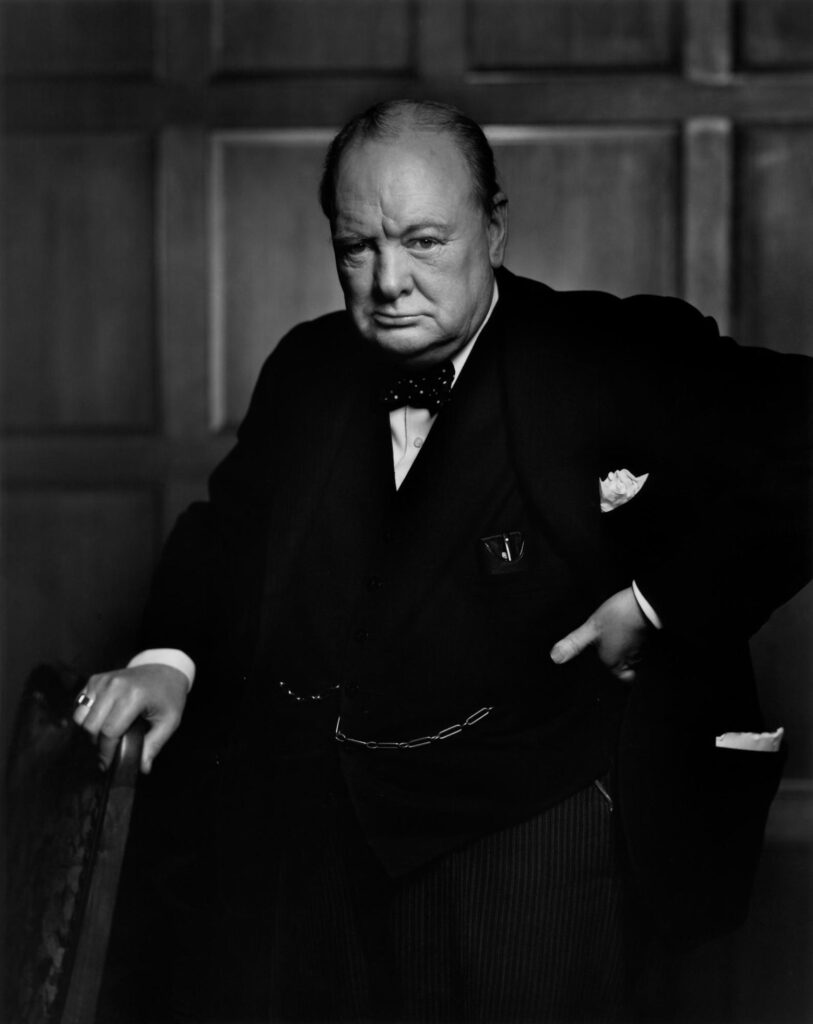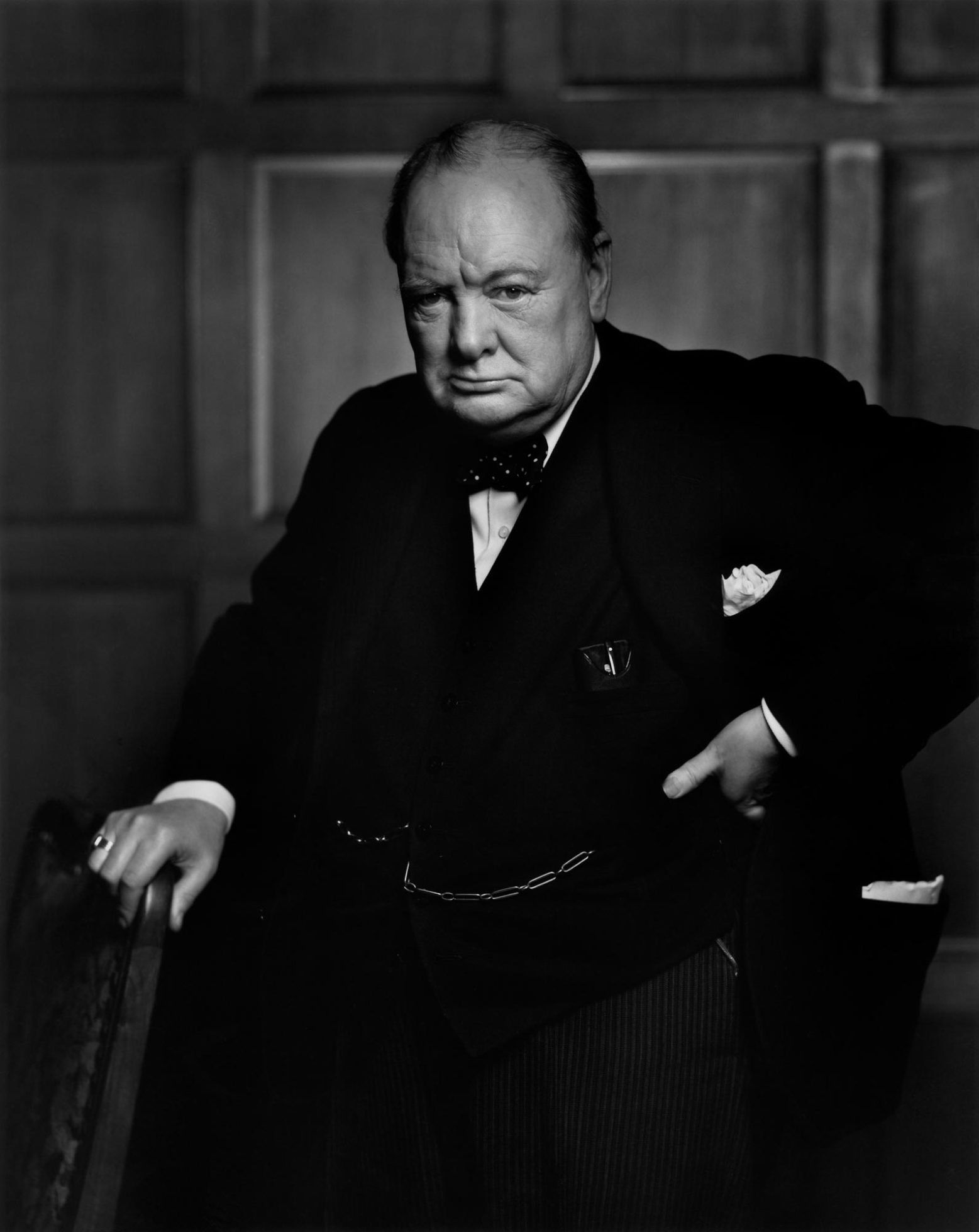Portrait photography is a realm of photography that has the power to convey the essence of an individual in a single frame. It’s an art that requires not just technical prowess but also a profound understanding of human nature. As a professional photographer with a passion for helping others and a background that includes both homelessness and recognition as an ambassador, my journey has been marked by a diverse range of experiences. This journey has deepened my appreciation for the subtleties and challenges of portrait photography.
Let’s start by delving into a captivating story from history, one that not only showcases the significance of portrait photography but also exemplifies the complexities of capturing a genuine moment.

Winston Churchill’s Portrait: A Tale of Capturing Authenticity
On 30th December 1941, amidst the throes of World War II, Winston Churchill stood before the Canadian House of Commons in Ottawa. It was a pivotal moment in history, a time when the Allied powers were facing one of the lowest points in the conflict. Churchill, with his indomitable spirit, addressed the assembly with unwavering resolve. He made it unequivocally clear that Britain would continue to fight, even if it meant standing alone. The stakes were high, and the world looked to Churchill for leadership.
This moment in history was about more than just words; it was about capturing the essence of a leader who symbolized defiance and courage in the face of adversity. Enter Yusuf Kosh, a portrait photographer commissioned to immortalise this iconic figure. Kosh was informed that he had a mere two minutes to accomplish this monumental task.
As Kosh prepared for the shoot, Winston Churchill’s ever-present cigar added a layer of complexity to the scene. The Prime Minister of the United Kingdom showed no intention of parting with his cigar, even for a moment. This seemingly small detail added to the challenge faced by the photographer.
Kosh meticulously checked his camera settings, ensuring that everything was technically perfect. The clock was ticking, and the pressure was mounting. The weight of capturing Churchill’s essence in a mere two minutes was a daunting task.
With his camera ready, Kosh stepped forward, and in a moment of spontaneity, he reached out and plucked the cigar from Churchill’s mouth. It was a bold move, one that could have provoked the ire of the great leader. As Kosh returned to his camera, he observed Churchill’s expression, which was nothing short of belligerent. It was at that precise moment that Kosh took the photograph.
Although Kosh took more photographs during the session, it was that first image, capturing Churchill in that unguarded moment, that became iconic. It was the Churchill the world recognised—the indomitable bulldog, resolute and unwavering.
The Essence of Portrait Photography: Capturing the Real You
This captivating story of Winston Churchill’s portrait underscores the fundamental essence of portrait photography—to capture the real person, the unguarded moments, the genuine essence that lies beneath the polished exterior.
In today’s world, where individualism often reigns supreme, many of us present highly curated personas to the world. We carefully select the facets of ourselves that we want to project, and we hide the rest. It’s a natural response to the fear of being exposed, a fear that transcends cultures and is deeply ingrained in the human psyche.
Throughout history, there has been a prevalent myth that when photography was introduced to certain cultures or tribes, people believed that their souls were being stolen and captured on film. This myth underscores the universal human apprehension of being revealed, of having our true selves exposed to the world.
The Vulnerability of Being Photographed
As a portrait photographer, I often encounter individuals who express discomfort about being photographed. They may start with statements like, “I don’t like photographs of myself,” or “I’m very particular about how I look in photos.” These initial remarks serve as a form of notice—a signal that being in front of the camera is a vulnerable experience for them. It’s an acknowledgment that they feel uneasy about how they will appear in the photograph.
There’s a quote I once heard, though I can’t recall its origin: “Every portrait is a war between the sitter’s vanity and the photographer’s guile.” It encapsulates the delicate balance that portrait photographers must navigate. On one hand, your subject wants you to capture the persona they wish to present to the world—the polished and carefully curated image. On the other hand, your role as a photographer is to be astute, clever, and perceptive enough to capture the chinks in the armor, the moments that reveal the authentic person.
Drawing Out the Real Essence: The Photographer’s Role
The task of a portrait photographer goes beyond technical proficiency; it extends into the realm of human interaction and psychology. Your role is to create a safe and nurturing space for your subjects, one where they feel comfortable enough to reveal their true selves. How you achieve this largely depends on your personality and approach as a photographer.
If you’re an extrovert, you might employ a more outgoing and expressive demeanor to draw out your subjects. Your energy and enthusiasm can help create an atmosphere where they feel encouraged to be themselves.
On the other hand, if you’re an introvert, your approach might be quieter and more conversational. You may engage your subjects in meaningful dialogue, encouraging them to relax and open up during the session.
Sometimes, as a photographer, you need to be a bit sneaky in your approach. For instance, when setting up lights or making technical adjustments, you can use the opportunity to take test shots without their knowledge. During these unguarded moments, you may capture expressions and emotions that feel more authentic than when they are consciously posing.
Another effective technique is to have your subjects close their eyes and look downward, then count to three and ask them to look directly at the camera. That brief moment when their eyes open wide often results in a more honest and genuine expression.
Throughout the session, your subjects need to feel that you are not there to embarrass or shame them. You’re not on a mission to create an art project that will expose them in an unflattering light. Instead, you genuinely want to capture the real them because you believe that an honest portrait is a more attractive one. It’s a portrait that reveals a genuine human being rather than a carefully constructed facade.
The Challenge of Choosing the Authentic Shot
At the end of a portrait session, there’s a fascinating phenomenon that often unfolds. When you display the images for your subjects to choose from, they are typically drawn to the ones where they appear exactly as they want to be seen. These are the shots where they feel in control, where they have carefully posed to present their desired image.
However, there’s usually one image that stands out—the one that captures an unguarded moment, a genuine expression, a crack in the facade. This image often elicits a mixture of fascination and fear. Your subjects are drawn to it because it feels real, but they’re also apprehensive because it reveals vulnerability.
As a portrait photographer, it’s your responsibility to encourage your subjects to choose the shot that feels the most like them, the one that reflects their true essence. It’s a delicate negotiation, a process of convincing them to embrace the unguarded moment.
Every time I’ve managed to persuade a subject to select the image that feels the most authentic, it has consistently garnered the most positive response when shared with friends and family. People can intuitively sense the difference between a meticulously posed photograph and one that captures a real, unguarded, and genuine moment.
Stepping Into the Subject’s Shoes: The Photographer’s Vulnerability
For any photographer, it’s a valuable exercise to occasionally put yourself in the position of the subject. Hand over your camera to someone else and let them take photographs of you. Alternatively, book a session with a fellow photographer or a professional portrait photographer. This experience serves as a reminder and fosters empathy for the vulnerability your subjects feel during a portrait session.
By placing yourself in front of the lens, you gain insight into the dynamics of being photographed. You understand the apprehension, the self-consciousness, and the desire to present your best self. This empathy can be a powerful tool in creating a safe and comfortable environment for your subjects.
The Art of Capturing Authenticity: A Lifelong Journey
In conclusion, portrait photography is a profound art that involves much more than technical skill. It’s a journey into the human psyche, a quest to capture the real person beneath the facade. It’s about creating a space where vulnerability is embraced, and authenticity shines through.
The story of Winston Churchill’s portrait reminds us of the power of a single photograph to convey the essence of a person, even in the most challenging circumstances. It also highlights the delicate balance between a subject’s desire to present a curated image and a photographer’s skill in capturing unguarded moments.
As a portrait photographer, your role is to be perceptive, empathetic, and skillful. You must create an environment where your subjects feel safe to be themselves. The reward is an image that goes beyond aesthetics—it’s a reflection of a real, genuine human being.
So, the next time you step behind the camera, remember that your mission is not just to take a photograph but to reveal the soul of your subject. It’s a lifelong journey of discovery, empathy, and artistry—a journey that continues to enrich both your life and the lives of those you photograph.



